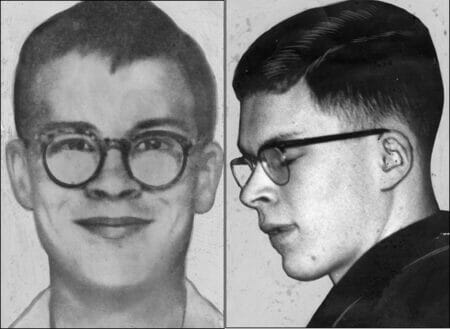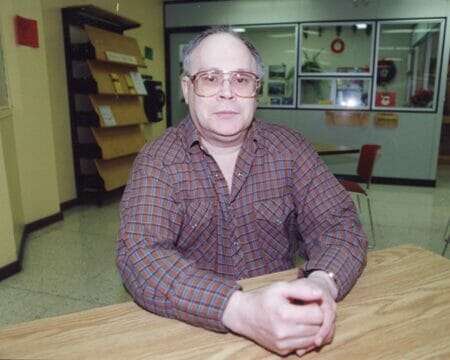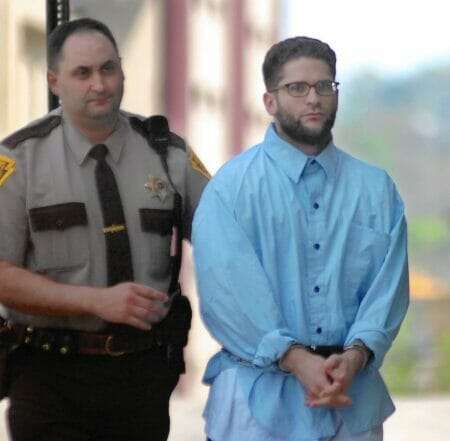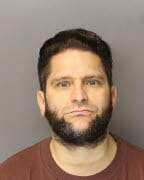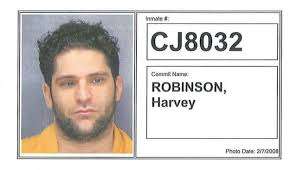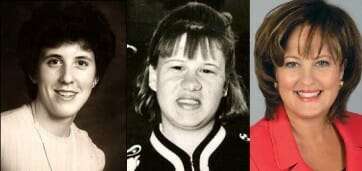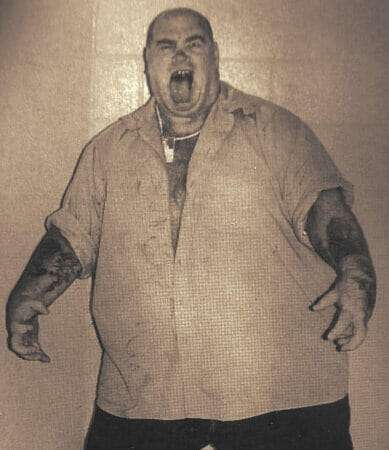
Joseph Metheny was a serial killer from Maryland who was convicted of two murders but confessed to over a dozen. The main issue with researching Joseph Metheny on My Crime Library is that he was also a prolific liar. Joseph Metheny who claimed to have grounded his victims up and served them up at a roadside stand has never been proven. Lets take a closer look at Joseph Metheny.
Joseph Metheny Childhood
Joseph Metheny was born in Baltimore Maryland on March 2, 1955. His father was an alcoholic who abused his family and would die in a car accident when he was six years old.
Joseph Metheny mother worked a series of jobs and was seldom home due to her working double shifts. Metheny claimed his mother was dead and she sent them off to live with relatives. However Josephs mother is very much alive and she denied sending off her children
Joseph would join the US Army when he turned eighteen years old in 1973. According to him he served time in Vietnam however this was never proven and that Metheny would spend his time in Germany plus the time frame does not make sense as the American involvement in the Vietnam was was over by the time he enlisted.
After his stint in the Army Joseph Metheny would drift around and his addiction to drugs and alcohol would begin.
Joseph Metheny Murders
Joseph Metheny was living in a series of homeless camps in the Baltimore Maryland area as all of his money was spent on alcohol and drugs. However he was able to keep a job as a forklift operator at a wooden pallet company
In 1994 Joseph Metheny would murder a woman, Cathy Ann Magazine, who would be buried in a shallow grave on the wooden pallet company where the body remained for over two years. Methany said he later dug her up, put her head in a box and threw it in the trash
In 1995 Joseph Metheny would attack and murder two homeless men with an axe. Apparently there was a dispute between two groups of homeless people that escalated to violence. Another homeless man Larry Amos stole the axe and murdered another man. Amos would later be convicted of manslaughter and Joseph Metheny would not be convicted due to a lack of evidence. He would later confess to the first two murders
In 1996 Joseph Metheny would murder Kimberly Lynn Spicer with a knife. Joseph would attempt to sexually assault another woman who was able to escape and ran to police. A month later Metheny would ask a friend to help him bury Kimberly Lynn Spicer however the friend went to the police and Methany would be arrested.
Joseph Metheny Trials
Joseph Metheny would be convicted on the case where the victim was able to escape and would be sentenced to fifty years in prison for attempted sexual assault and kidnapping in 1997
In 1998 Joseph Metheny would be sentenced to death for the murder of Kimberly Lynn Spicer, this would later be reduced to life in prison without parole
A year later Joseph would plead guilty to the murder of Cathy Ann Magaziner where he was sentenced to life in prison without parole
Joseph Metheny Death
Joseph Metheny would be found dead in his prison cell on August 5, 2017, at the age of 62. His matter of death was from natural causes
Joseph Metheny Videos
Joseph Metheny Photos

Joseph Metheny More News
A Southwest Baltimore man who was convicted of two murders but claimed to have killed 10 people was found dead in his prison cell Saturday afternoon, Maryland corrections officials said.
Joseph Metheny, 62, was found unresponsive by a prison guard about 3 p.m. and pronounced dead shortly after, said Gerard Shields, spokesman for the Department of Public Safety and Correctional Services. Metheny had his own cell at Western Correctional Institution in Cumberland, and officials are conducting a routine investigation into his death.
Metheny was serving two life sentences for killing two women in 1994 and 1996 and burying their remains under his trailer at a Southwest Baltimore pallet company. He was sentenced to die in 1998, but an appeals court overturned the sentence and sent him to prison for life without parole.
At his sentencing, he requested to be put to death and said, “The words, ‘I’m sorry’ will never come out, for they would be a lie. I am more than willing to give up my life for what I have done, to have God judge me and send me to hell for eternity.”
He said he killed because he “enjoyed it.”
Metheny received the life sentences for killing Cathy Ann Magaziner and Kimberly Spicer. He had been acquitted in 1998 for killing two homeless men with an ax at a makeshift camp in South Baltimore and admitted later he had lied and gotten away with it when he denied his involvement. He said he threw other bodies in the Patapsco River that were never found.
Baltimore police were unable to confirm Metheny’s claims to have committed the additional murders. Prosecutors dropped charges against Metheny in the killing of another woman for lack of evidence.
During the time of the killings, Metheny worked as a $7-an-hour forklift driver at the pallet factory in Southwest Baltimore. Spicer’s body was found Dec. 15, 1996, under a trailer at the factory. Three days later, Metheny led police to a shallow grave on the property that held Magaziner’s remains.
His defense attorneys described Metheny’s childhood as one of neglect, with an absent, alcoholic father and a mother who worked double shifts to support her six children in Essex. A large man but nicknamed “Tiny,” Metheny preyed on women addicted to heroin and cocaine, police said.
https://www.baltimoresun.com/news/crime/bs-md-metheny-dies-20170807-story.html






